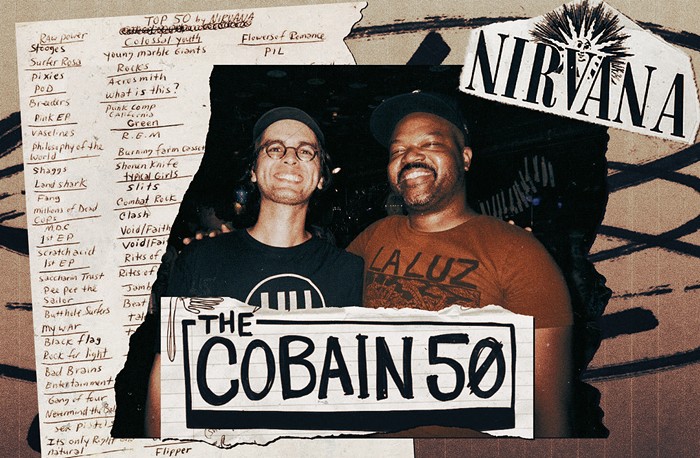
Five Capital Executions in China: Drawing and Quartering, 2007.

Five Capital Executions in China: Flaying, 1993.

Five Capital Executions in China: Starvation, 1999.
Looking at Zhi Lin's cycle of brutal, vivid death-penalty paintings, you might not expect the calm-voiced professor who appears on this podcast. Lin left his native China for art school in London in 1987. He continued school at the University of Delaware and got a job teaching in John Ashcroft's hometown in Missouri before coming to the University of Washington in 2001. For 14 years, Lin has quietly and tirelessly devoted himself to painting five giant scenes of violence. At Howard House this month, they have their first completed exhibition.
Each 12-by-7-foot canvas—surrounded by black fabric and topped with a ribbon, like a ceremonial object—depicts one of five executions: death by starvation, firing squad, decapitation, flaying, and drawing and quartering.
The scenes are packed with onlookers who seem to move the fatal action forward by pressing in, mob-style, on it-—or onlookers who go about their lives, eating or biking in tacit agreement with the killing. Lin cites W. H. Auden's poem "Musee des Beaux Arts":
About suffering they were never wrong, The Old Masters;
how well, they understood
Its human position; how it takes place
While someone else is eating or opening a window or just walking dully along;
How, when the aged are reverently, passionately waiting
For the miraculous birth, there always must be
Children who did not specially want it to happen, skating
On a pond at the edge of the wood:
They never forgot
That even the dreadful martyrdom must run its course
Anyhow in a corner, some untidy spot
Where the dogs go on with their doggy life and the torturer's horse
Scratches its innocent behind on a tree.
In Breughel's Icarus, for instance: how everything turns away
Quite leisurely from the disaster; the ploughman may
Have heard the splash, the forsaken cry,
But for him it was not an important failure; the sun shone
As it had to on the white legs disappearing into the green
Water; and the expensive delicate ship that must have seen
Something amazing, a boy falling out of the sky,
had somewhere to get to and sailed calmly on.
In each painting, the long vertical scene spills downward on the canvas, the violent action laid virtually at the feet of the viewer. Though Lin's inspiration to turn from abstraction to social realism was the quashing of the 1989 Chinese student uprisings, it is important to him that these scenes are not specific to any one country. They're about all government killings.
Lin's next project is a series of paintings—horizontal this time, so that he doesn't have to live on ladders any longer—depicting the Chinese workers who built the railroad from Sacramento to Promontory, Utah, from 1866 to 1869. On display in the front room at Howard House are poignant Chinese ink studies for this series of paintings, titled Unwelcomed: Invisible People, sketched from historical photographs and from Lin's own travels "following the footsteps" of the workers, including going to the annual Golden Spike reenactments in Utah, where he's one of very few Chinese attendees.
The ink studies on paper are bereft of the workers themselves; the Chinese, unlike the Irish workers, were systematically left out of the railroad festivities that occasioned the photographs, and their presence was documented almost not at all. Lin plans to bring them back, on canvas.

Site of the Golden Spike Celebrations, 2006.

19th Century Chinese Graves, 2007.

A Scene off Highway 83, 2006.















